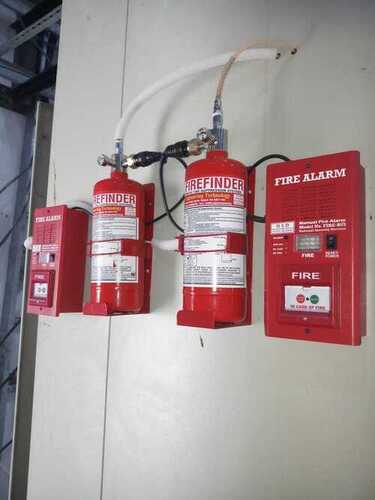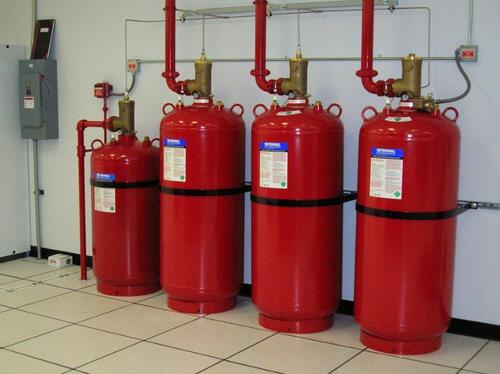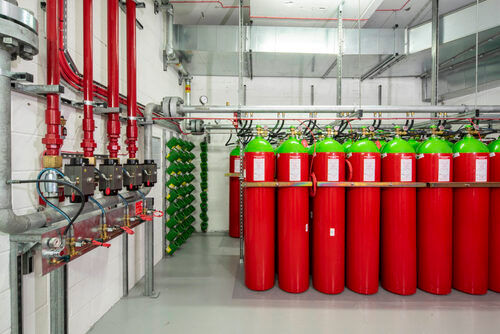Auto Fire Extinguishing System
Product Details:
- Dimension (L*W*H) 1.1x1.1x1.1 Meter (m)
- Color RED
- Frequency 50 Hertz (HZ)
- Input Power 230 Volt (V)
- Usage GAS SUPPRESSION SYSTEM
- Temperature Range 100 Celsius (oC)
- Material UL APPROVED
- Click to View more
Auto Fire Extinguishing System Price And Quantity
- 1 Set
- 50000 INR/Set
Auto Fire Extinguishing System Product Specifications
- YES
- 1-150 Kilograms (kg)
- 12 MONTHS
- UL APPROVED
- GAS FLOODING SYSTEM
- electrical panel, server rack, electrical enclosure
- 230 Volt (V)
- GAS SUPPRESSION SYSTEM
- 100 Celsius (oC)
- 50 Hertz (HZ)
- RED
- 1.1x1.1x1.1 Meter (m)
Auto Fire Extinguishing System Trade Information
- New Delhi
- 500 Set Per Month
- 4 Week
- Yes
- Contact us for information regarding our sample policy
- Standard
- Asia
- All India
- CE & UL
Product Description
A fire occurs in a structure every 63 seconds in the United States. Some industries are more susceptible to fires including manufacturing, transportation, energy, and other mission-critical environments. For businesses with a higher risk of fire, it is important to determine the best fire suppression system to minimize risk, protect critical equipment, and keep employees safe.
There are several options for fire suppression systems. One of the most common types is a fire sprinkler system which spreads water to suppress the fire. While this method is very reliable, in many applications water can do more harm than good including the damage caused to equipment. This is also the case with fire suppression systems that use water mist suppression agents. Water mist agents can cause corrosion and have environmental and health corners. Another option is an automatic fire suppression system that uses dry chemical or gaseous agents to suppress a fire. The benefit of the gaseous agent that it leaves no residue behind while the dry chemical agents are suited for applications with flammable and combustible liquids.
Fire suppression systems may be activated manually or automatically when a fire is detected. This post explains the difference between automatic fire suppression systems and systems that require human intervention.
FAQs of Auto Fire Extinguishing System:
Q: What is the usage of Auto Fire Extinguishing System?
A: The Auto Fire Extinguishing System is used as a GAS SUPPRESSION SYSTEM.Q: Does the Auto Fire Extinguishing System come with an alarm?
A: Yes, the Auto Fire Extinguishing System comes with an alarm.Q: What is the warranty period for the Auto Fire Extinguishing System?
A: The Auto Fire Extinguishing System has a warranty period of 12 MONTHS.Q: What is the temperature range that the Auto Fire Extinguishing System can operate in?
A: The Auto Fire Extinguishing System can operate in a temperature range of 100 Celsius (oC).Q: What are the applications of the Auto Fire Extinguishing System?
A: The Auto Fire Extinguishing System can be used in electrical panels, server racks, and electrical enclosures.Q: What is the weight of the Auto Fire Extinguishing System?
A: The Auto Fire Extinguishing System has a weight range of 1-150 Kilograms (kg).Q: Is the material used in the Auto Fire Extinguishing System UL approved?
A: Yes, the material used in the Auto Fire Extinguishing System is UL approved.
Price:
- 50
- 100
- 200
- 250
- 500
- 1000+

 Send Inquiry
Send Inquiry





 English
English Spanish
Spanish French
French German
German Italian
Italian Chinese (Simplified)
Chinese (Simplified) Japanese
Japanese Korean
Korean Arabic
Arabic Portuguese
Portuguese